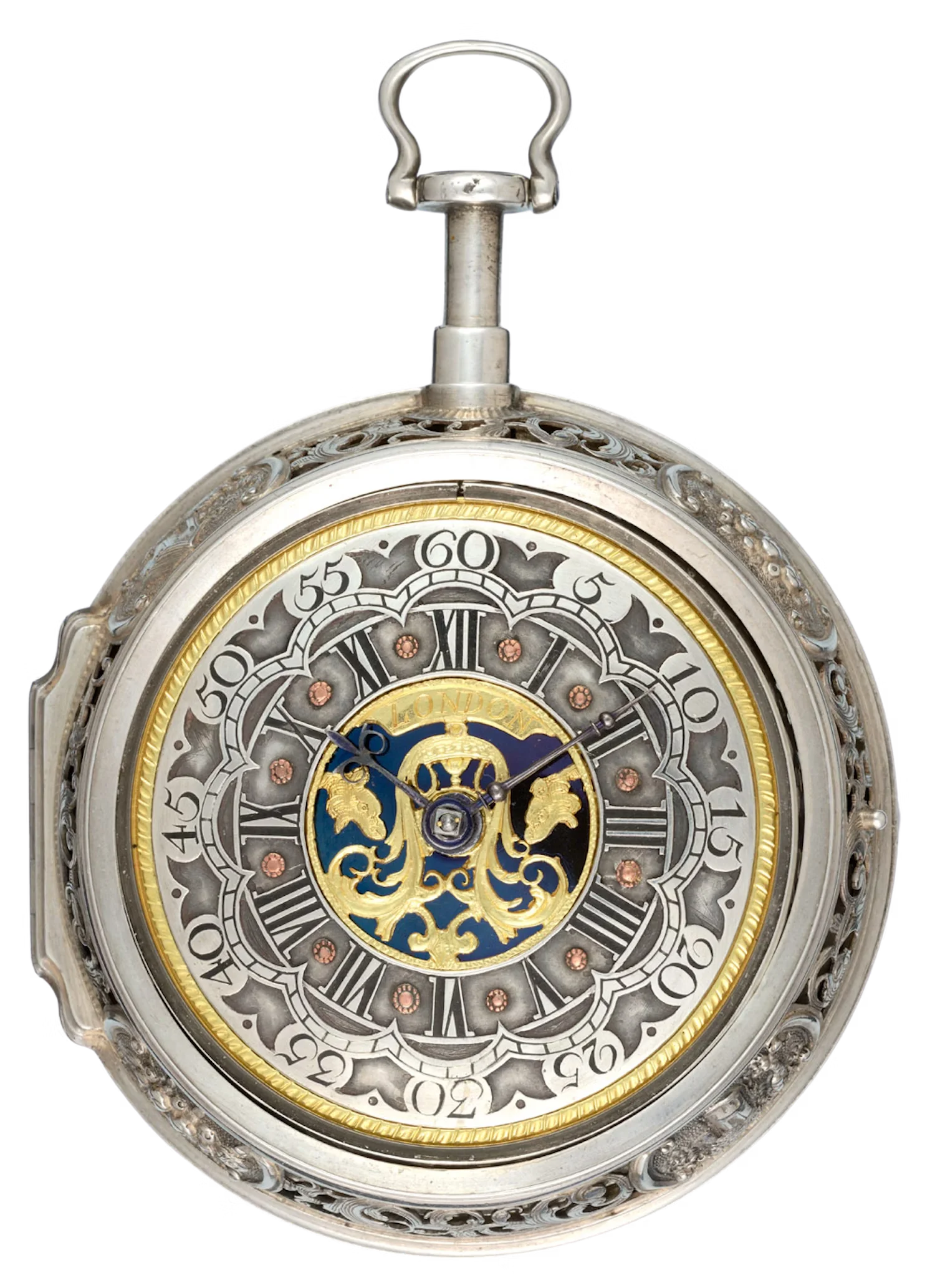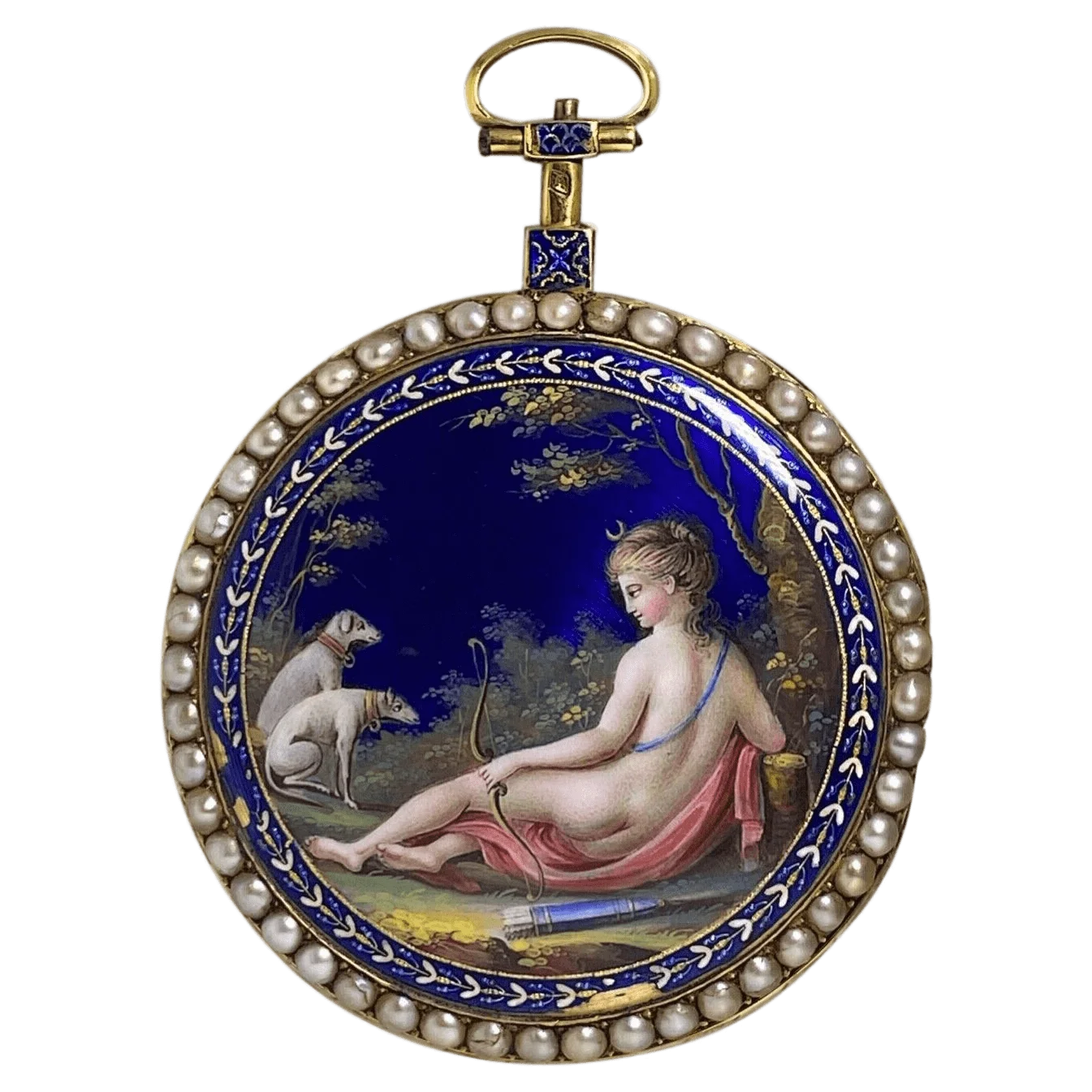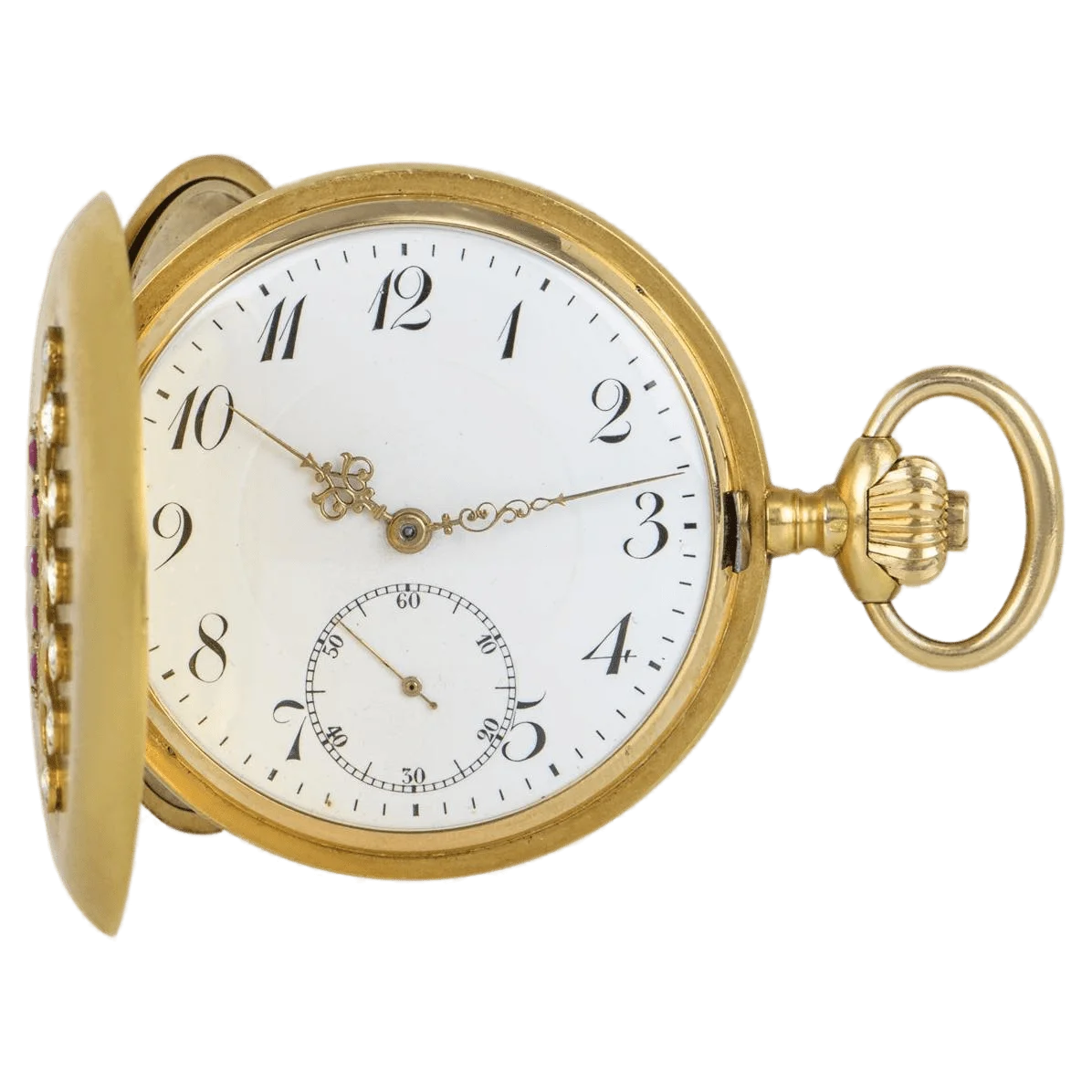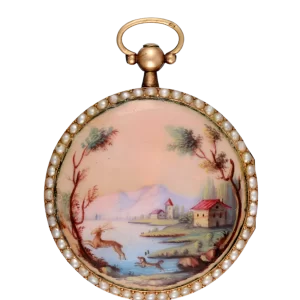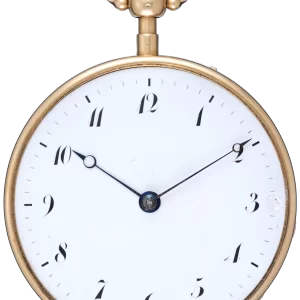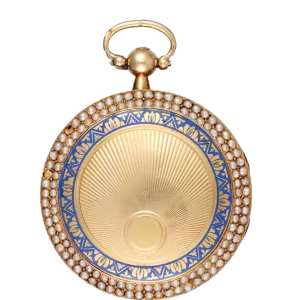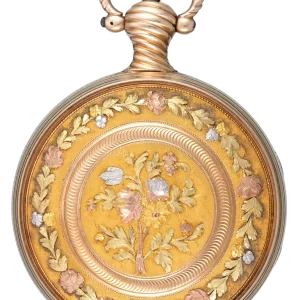GOLD RING THERMOMETER BY BREGUET – 1810
Signed Breguet et Fils
Circa 1810
Diameter 24 x 29 mm
Origin French
Condition Excellent
Materials Gold
Carat for Gold 18 K
Out of stock
£9,910.00
Out of stock
Step into the rich legacy of horological craftsmanship with the Gold Ring Thermometer by Breguet, an exquisite creation from the early 19th century. Crafted by one of history's most illustrious watchmakers, this rare piece is a testament to Breguet's unparalleled ingenuity and attention to detail. Encased in a stunning gold oval ring, the thermometer boasts a meticulously designed gilt plate featuring a bimetallic strip and quadrant gears linked to a central pinion. The fine gold dial, signed and engine-turned, is elegantly marked with "Thermometre" and detailed temperature indicators such as "Glace," "Tempere," "Chaleur," and "Fievre." The gold oval case, with its engine-turned middle, is glazed on both sides to showcase the fascinating internal mechanism. A reeded gold swivel band adds versatility, allowing the piece to be worn as a ring or perhaps a fob. Accompanied by a certificate from the archives, this exceptional thermometer was sold for 336 Francs in 1810, and it holds historical significance with only a few ever produced, including one sold to Prince Antonio of Spain in 1813. Illustrated in Emanuel Breguet's "Breguet - Watchmakers since 1775," this unique artifact measures 24 x 29 mm and is signed "Breguet et Fils." With its excellent condition and 18K gold construction, this piece is a rare and elegant addition to any discerning collector's trove.
This is a rare and exquisite early 19th Century thermometer created by Breguet, one of the most renowned watchmakers of all time. It is encased in a gold oval ring and features a beautifully designed gilt plate with a bimetallic strip and quadrant gears that are linked to a central pinion. The fine gold dial is signed and engine turned with "Thermometre" markings, and the circular chapter is marked in degrees with "Glace – Tempere – Chaleur – Fievre" at the quarters. The gold oval case has an engine turned middle and is glazed on both sides to reveal the intriguing mechanism. The reeded gold swivel band allows for use as a ring or perhaps a fob. This exceptionally rare piece comes with a certificate from the archives which shows it was sold for 336 Francs in 1810. Breguet has produced very few thermometers, with the ninth sold to Prince Antonio of Spain in 1813. This ring thermometer is illustrated in Breguet - Watchmakers since 1775 by Emanuel Breguet on page 263. Overall, this is an elegant and unique piece from an iconic watchmaker that any collector would be proud to own. It measures 24 x 29 mm in diameter and is signed Breguet et Fils.
Signed Breguet et Fils
Circa 1810
Diameter 24 x 29 mm
Origin French
Condition Excellent
Materials Gold
Carat for Gold 18 K

